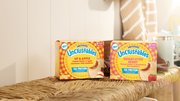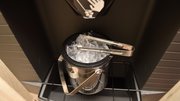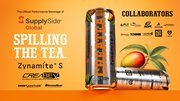Blog
Collecting The Dividend
April 25, 2015 by Tim Sanford
TAGS: Vending Times editorial, vending industry, vending editorial, retail automation, vending operator, vending industry history, coin machine, micro markets, coffee service, food service, Tim Sanford, vending history, vending machine engineering |
It might be worthwhile to assemble a history of engineering concepts which did not catch on when first applied to existing technology, but became triumphantly successful when the state of the art advanced or the market changed; one thinks of the automatic transmission.
Vending offers many examples of this. The validation of coins and banknotes (especially the latter) became much easier to implement and vastly more reliable as the microelectronics revolution picked up speed in the 1970s. Steady progress in miniaturization and precision gave customers more options and greater confidence, and that in turn enabled operators to sell a wider variety of merchandise.
The parallel application of solid-state electronics to data transmission and processing began to enhance machine "intelligence," but at a slower pace. This began with the payment system and developed into a central controller board. The ability to store and transmit transaction data was shown in prototype in the early 1970s and made steady, if slow, progress until it could be paired with economical and dependable wireless networks and video displays.
Along the way, a number of attractive vending concepts appeared which, to date, have found somewhat limited use. It may be time to stand back and look at them in context. One of our favorites is the satellite machine, which seems to offer an answer to the old criticism by industry observers of vending's limited ability to make "bundle" offers that have worked so well for convenience stores and fast food restaurants.
Modern vending controllers and payment systems, especially those offering a cashless option, have made it possible to do this with many kinds of equipment. It has proven appealing at rest stops among motorists wishing to purchase snacks and beverages for several family members. Modern combination machines that can sell both food and packaged beverages can be attractive to solitary customers too. We recall an occasion, three decades ago, when we had the opportunity to buy lunch from a vending bank near the jury room of a county courthouse. The machines were clean, filled and working, and the selection was excellent, but the task of using the bill changer to procure a sufficient fund of quarters and then moving from one machine to the next, inserting money and retrieving change while balancing previous purchases on one's left forearm was intricate and a bit tedious.
As the full-line vending revolution began to lose momentum in the early 1970s, an industry that had spent 15 years concentrating on ways to serve the largest number of people in the shortest possible time began to turn its attention back to smaller but still potentially lucrative accounts. The satellite dispenser -- for example, a small-footprint refrigerated food vender that could be actuated by the coin mechanism of an adjacent coffee or cold-drink machine -- was one solution designed for this market. Satellite machines of one kind or another, from major and specialist manufacturers, have been around ever since.
This approach seems ideally suited to the greatly increased flexibility and interactivity of today's networked machines. We are intrigued by the thought of a full-house hot beverage machine and a glassfront snack vender sharing a control module equipped with a contemporary touchscreen user interface and cash-or-cashless payment system that would encourage patrons to purchase a cup of coffee and a pastry, or a cup of tea and a granola bar.
But we think that the maximum benefit from this kind of installation would be realized if it were supported by strong branding. Several national (and international) suppliers could do this tomorrow, if they wished; and more could team up for cross-merchandising that would benefit both.
Nor is it beyond the capability of an imaginative vending operator to couple an excellent private-label coffee and products from a local or regional bakery under the operation's own brand. Private-label coffee has worked well for coffee service operators as a means of differentiating themselves from their competitors and building client loyalty through provision of a product line unavailable from anyone else. There seems no reason that vendors can't do the same.
Also required would be intensive merchandising support, including educating patrons about the remarkable capabilities of today's 72" hot beverage machines. That education process includes not only the proven show-and-tell demonstrations that made whole-bean coffee venders so attractive to patrons two decades ago, but also the ability of top-of-the-line machines to brew excellent leaf tea by the cup. It could begin with hosted sampling sessions and handing out informative literature, reinforced by video messaging.
The possibilities afforded by today's (and yesterday's) technologies are limitless. We think this year's National Automatic Merchandising Association OneÂShow affords a great opportunity to start a conversation about the more obvious ones. Vendors have underwritten decades of research and development through their purchases. It is time to reap the rewards.







